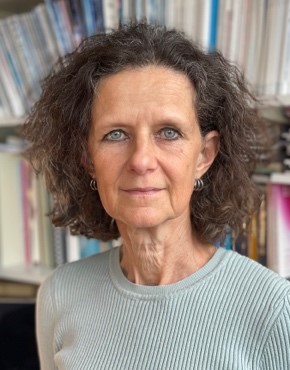
|
|
|
Keynote speakers > Corinne MATHONIERE (DCC senior prize)
Electron Transfer in molecule-based materials
Prof. Corine Mathonière
Université de Bordeaux, Centre de Recherche Paul Pascal CNRS, UMR 5031, 33600 Pessac, France
corine.mathoniere@u-bordeaux.fr

Biosketch:
Corine Mathonière received her Ph.D. at the University of Orsay in 1993. Her work was devoted to the optical properties of molecular-based magnetic materials under the supervision of Prof. O. Kahn and J.-J. Girerd. After a post-doctoral stay in the group of Prof. P. Day (Royal Institution of Great Britain, Londres), she joined in 1994 the University of Bordeaux as associate professor, then in 2010 was promoted professor. During her career, she got a junior position in 2010 and a senior position in 2024 at the Institut Universitaire de France. Since 1994, Dr. C. Mathonière has developed at the Institut de Chimie de la Matière Condensée de Bordeaux (CNRS) research activities in “Switchable Molecules and Materials molecular” group interested in the synthesis and physical studies of switchable molecular materials. In 2021, she moved to Centre de Recherche Paul Pascal (CNRS) to work in the team “Molecular materials and Magnetism” on high-Tc and conductive magnets.
Summary:
Electron transfer is a fundamental electronic phenomenon existing in many biochemical and biological processes. In materials science, this phenomenon can be harnessed to generate new functionalities in various materials. Through coordination chemistry, we can deliberately design coordination molecules and polymers that exhibit metal-to-metal or metal-ligand electron transfers. In this presentation, we will describe several examples of compounds demonstrating electron transfer, whether spontaneous or induced by external factors such as temperature or light. Additionally, we will discuss in detail synthesis and characterizations of compounds recently synthesized in our laboratory, where electron transfer leads to thermal or optical switching,1 strong magnetic exchange interactions,2 and enhanced electronic conductivity.3,4
References:
1. D. Aguila, Y. Prado, E. Koumousi, C. Mathonière, R. Clérac, Chem. Soc. Rev. 2016, 45, 203.
2. P. Perlepe at al., Science. 2020 370, 587–592 .
3. K. S. Pedersen et al., Nat. Chem., 2018, 10, 1056.
4. P. Perlepe at al., Nat. Comm. 2022 13 5766.

